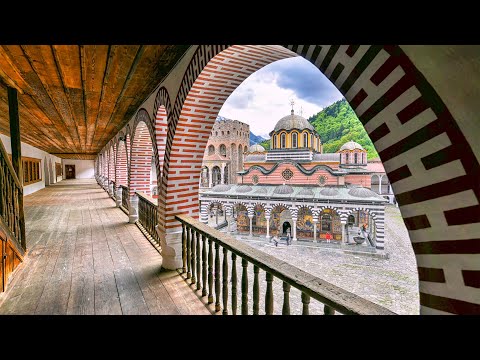
Nestled in the southeastern corner of Europe, Bulgaria stands as a striking blend of ancient history, vibrant culture, and stunning landscapes. This Balkan nation, bordered by Romania to the north, Serbia and North Macedonia to the west, Greece and Turkey to the south, and the Black Sea to the east, offers a unique mix of natural beauty and rich historical tapestry that beckons travelers from around the globe.
#### Ancient Roots and Rich History
Bulgaria’s history is profoundly layered, stretching back thousands of years. The country’s strategic location has seen a flurry of civilizations come and go—Thracians, Romans, Byzantines, and Ottomans have all left their mark on this land. Among its most famous historical treasures are the Thracian tombs, which are included in UNESCO’s list of World Heritage Sites. The Kazanlak Tomb and Sveshtari Tomb offer fascinating insights into a civilization that thrived here before Roman domination.
The adoption of Christianity as a state religion in 865 marked another pivotal chapter in Bulgarian history. This period saw the flourishing of Bulgarian culture and literacy, with the creation of the Cyrillic script—a testament to Bulgaria’s significant contribution to European culture.
#### Natural Beauty Unleashed
Bulgaria boasts a remarkably varied landscape despite its relatively small size. From the sun-kissed beaches along its Black Sea coast to its rugged mountain ranges such as Rila and Pirin, Bulgaria caters to beachgoers and mountain lovers alike. The country’s highest peak—and indeed the Balkans’—is Musala Peak (2,925 meters), offering challenging hikes and breathtaking views.
For those who enjoy serene vistas or hiking adventures, Bulgaria’s numerous national parks provide an escape into nature. Pirin National Park is particularly famous for its glacial lakes, towering peaks, and diverse flora and fauna. Meanwhile, Central Balkan National Park protects some of Europe’s most extensive beech forests.
#### Cultural Tapestry
Bulgarian culture is a vibrant quilt woven from many traditions influenced by numerous invasions throughout its history. This diversity is reflected in Bulgarian culinary traditions that offer a delightful palette for any food lover. Dishes like banitsa (a phyllo pastry filled with cheese), Shopska salad (cucumber tomato salad topped with cheese), and kavarma (meat stew) are staples here.
Music and dance play an integral part in Bulgarian celebrations; traditional folk music featuring instruments like gadulka (string instrument) or kaval (wooden flute) accompanies lively dances such as horo or rachenitsa during festivals and gatherings.
#### Modern-Day Bulgaria
Today’s Bulgaria is a member of both NATO since 2004 and the European Union since 2007 but remains outside the Eurozone with its currency as Lev (BGN). Its capital Sofia stands out not only as an urban hub but also for housing treasures like Alexander Nevsky Cathedral—one of Bulgaria’s symbolic landmarks—and Boyana Church noted for its medieval frescoes.
Despite economic challenges over decades post-communism transition period; recent years have seen growth in sectors like technology startup scene along tourism which plays crucial role due economy thanks largely untapped potential cultural heritage natural beauty sites attracting visitors worldwide year-round basis.
#### Conclusion
Bulgaria may not always top typical tourist lists which perhaps adds element charm mystery; however those who venture discover find themselves richly rewarded comprehensive experience that spans breadth time—from antiquity modern day—from mountainous terrains idyllic coastlines from hearty cuisine soul-stirring folklore performances making more than worthy destination any travel enthusiast’s itinerary.
